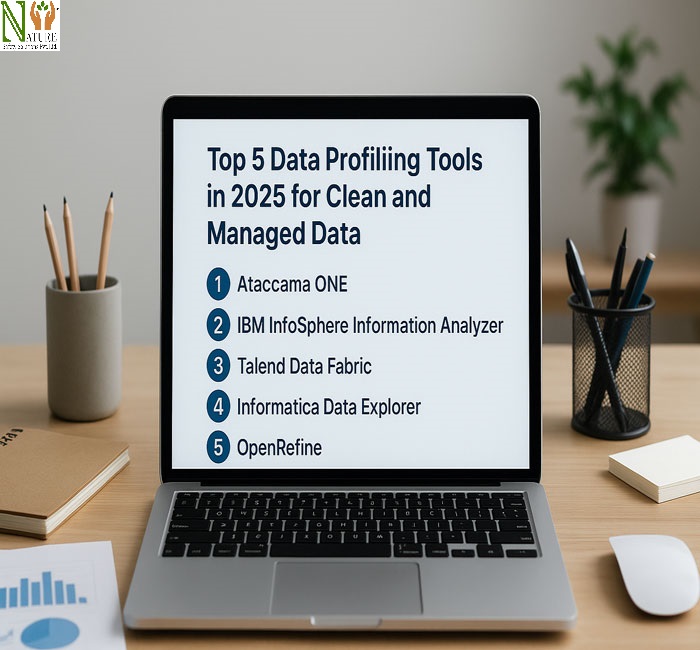Clean, accurate data is the lifeblood of informed decision-making. But real-world data is often messy – filled with duplicates, inconsistencies, and missing values. That’s where data profiling tools come in. These tools help organizations inspect, clean, and manage datasets so they can trust their data and act confidently. Here’s how they help—and the top five tools worth considering in 2025.

What Are Data Profiling Tools?
Data profiling tools are software solutions that analyze datasets to identify quality issues – like missing values, duplicates, inconsistent formats, or anomalies – and help remediate them. By revealing hidden problems early, they save time, reduce errors, and boost confidence in data-driven decisions
Why Use Data Profiling Tools?
- Automation at scale: Manually cleaning large datasets is impractical; profiling tools automate the process.
- Early issue detection: Profiling tools catch data issues early, reducing rework later in projects.
- Improved governance: They support compliance by providing audit trails, validation, and metadata tracking.
- Unified view: These tools help make sense of data spread across various systems, enabling integration and centralized oversight.
The Top 5 Data Profiling Tools in 2025
Here are the most trusted and powerful tools available this year, suited for various needs and scales.
1. Ataccama ONE
An all-in-one, AI-powered platform that handles data profiling, governance, and quality management. It offers automated rule suggestions, continuous monitoring, and supports massive datasets across relational, NoSQL, cloud, and streaming data sources. Ideal for large enterprises needing automation and deep profiling capabilities.
2. IBM InfoSphere Information Analyzer
Part of IBM’s InfoSphere suite, this tool delivers deep profiling capabilities such as column-level, key analysis, and cross-domain integrity checks. It integrates seamlessly with governance frameworks—making it suited for regulated industries requiring precision and audit readiness.
3. Talend Data Fabric / Open Studio
Talend offers both open-source and enterprise-grade solutions. Talend Studio (Open Studio) is free and feature-rich, with data profiling, cleansing, and ETL capabilities. Talend Data Fabric enhances this with graphical dashboards, ML-powered recommendations, and real-time monitoring—great for distributed teams and large-scale use cases.
4. Informatica (Data Explorer / Data Quality)
Informatica delivers comprehensive profiling tools within its broader data quality ecosystem. Its offerings include anomaly detection, advanced metadata management, and integration with complex ETL. Excellent for organizations already invested in Informatica’s ecosystem seeking deep profiling.
5. OpenRefine
A free and open-source tool focused on manual data cleaning and profiling. It excels at merging data entries, clustering inconsistent values, and correcting dirty datasets. Best suited for individual analysts or small teams working with one-off datasets, spreadsheets, or CSV files.
Choosing the Right Tool: Key Considerations
| Criterion | Best Tools |
| Scale & Automation | Ataccama ONE, Informatica |
| Governance & Compliance | IBM InfoSphere |
| Open Source / Cost-effective | Talend Open Studio, OpenRefine |
| Enterprise Integration | Talend Data Fabric, Informatica |
- If you need enterprise-scale automation and governance, go with Ataccama ONE.
- If compliance and audit readiness matter most, choose IBM InfoSphere.
- For flexible, budget-friendly workflows, consider Talend Open Studio or OpenRefine.
- If you already use Informatica, their tools offer deep integration and profiling continuity.
How to Use These Tools Effectively
- Begin with profiling: Run initial scans to identify duplicates, gaps, and anomalies.
- Clean and standardize: Correct errors, unify formats, and enrich data where needed.
- Automate validations: Set up recurring checks so future data errors don’t accumulate.
- Monitor continuously: New data comes in daily—ongoing monitoring keeps quality high.
- Collaborate and govern: Use tools that integrate with data governance policies and systems, improving consistency and compliance.
Also read :-
